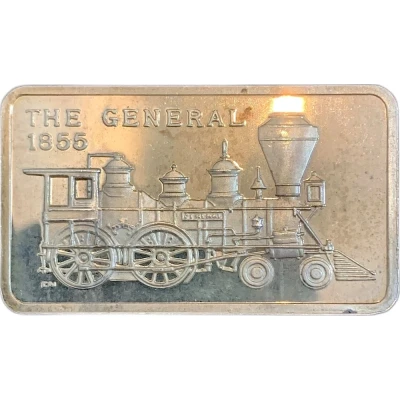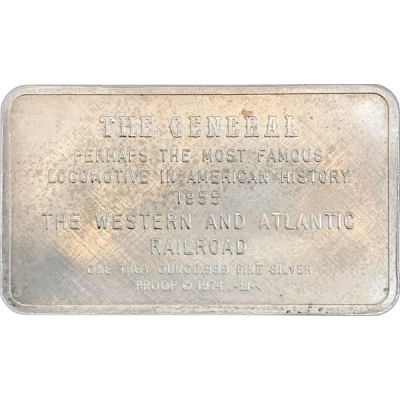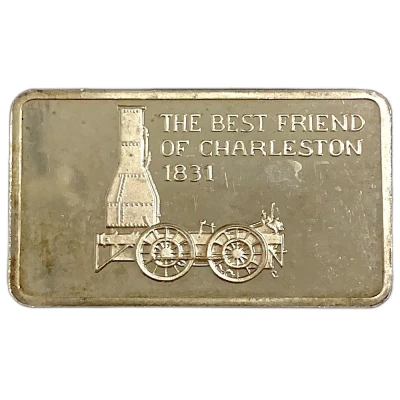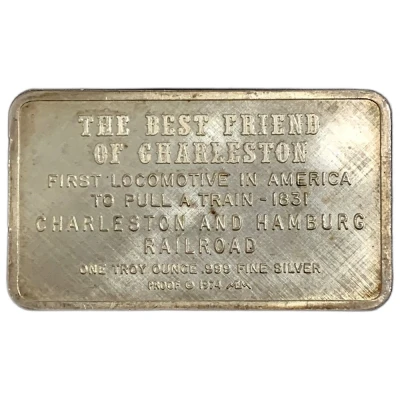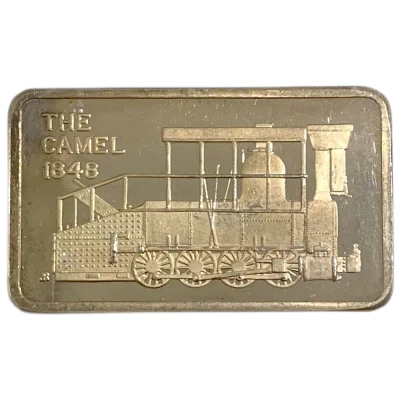


1 Ounce - The Camel MEM
1974 year| Silver (.999) | 31.90 g | - |
| Location | United States |
|---|---|
| Type | Bullion › Bars |
| Year | 1974 |
| Composition | Silver (.999) |
| Weight | 31.90 g |
| Size | 48.0 × 29.0 mm |
| Thickness | 2.60 mm |
| Shape | Rectangular |
| Technique | Milled (Proof) |
| Orientation | Medal alignment ↑↑ |
| Updated | 2024-11-14 |
| Numista | N#392275 |
|---|---|
| Rarity index | 97% |
Reverse
Smooth reverse with letterings.
Script: Latin
Lettering:
THE CAMEL
ONE OF THE MOST DISTINCTIVE
CLASSES OF LOCOMOTIVE
EVER TO BE DESIGNED
1848
ONE TROY OUNCE .999 FINE SILVER
PROOF © 1974 MEM
Edge
Plain
Comment
The Camel 1848 silver proof art bar was minted by the Mount Everest Mint (MEM) as part of The Great Locomotive Series One Collection. This limited edition collection consisted of ten art bars depicting various locomotives. The collection is presented in a framed blue presentation holder as depicted in the following image.
A camel or camelback locomotive is a type of steam locomotive with the driving cab placed in the middle, astride the boiler. Camelbacks were fitted with wide fireboxes which would have severely restricted driver visibility from the normal cab location at the rear.
The camel and the camelback design were developed separately by two different railroads in different eras. Though the name is often incorrectly used interchangeably, they had little in common other than the placement of the cab. Unlike the later Camelbacks, Camels had cabs that rode atop the boiler. Ross Winans wanted to put as much weight on the driving wheels as possible to increase traction. Camelbacks have a cab that straddles the boiler. While Camelbacks have the same idea of moving the cab forward, they had it for different reasons. Camelbacks were developed to allow for the use of larger fireboxes, such as the Wootten, which would obstruct the engineer's view from a conventionally placed cab. Camelbacks were particularly known for being used on the Central Railroad of New Jersey and the Reading Railroad.
